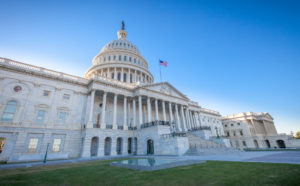
House Armed Services Committee (HASC) Chair Adam Smith (D-Wash.) has reintroduced the Relief from Sequestration Act to repeal automatic cuts for discretionary and mandatory spending, he said in an April 4 press release. The bill would end the prospect of sequestration for fiscal years 2020 and 2021, the final two years that are subject to the automatic spending cuts under the 2011 Budget Control Act (BCA). Smith previously introduced the bill at the beginning of the 115th Congress in 2017.…

 By
By 











